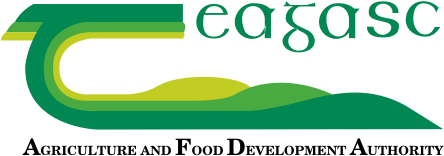Majority of Farmers to experience relatively small changes in Income due to Pillar I CAP Reform
A new report, by economists at Teagasc, examines the economic implications of Pillar I CAP reform implementation, which is due to start in January 2023.
The report examines the impact on family farm income and agricultural output of the changes to Pillar I supports, including the introduction of the Basic Income Support for Sustainability (BISS), Eco scheme and Complementary Redistributive Income Support for Sustainability (CRISS) payments, using data from the Teagasc National Farm Survey (NFS). It should be noted that no analysis was carried out on the changes that will occur in the Pillar II payments in this report.
The continuation of the convergence process for Pillar I payments in this CAP reform implies reduced levels of income support for some cohorts of the population, whilst providing additional levels of income support to other cohorts. However, one of the co-authors of the report Dr Fiona Thorne, Teagasc economist, says; “for most farmers the change in income support received and in family farm income that would be experienced is relatively small”. However, behind the average system story there are sector specific stories. In the analysis the majority of dairy farms are worse off than they would be if there were no change in the distribution of Pillar I CAP direct payments.
Only a very small proportion of specialist tillage farms gain in terms of Pillar I direct income support receipts, or family farm income, under the reform scenario. However, in contrast to the implications of the scenario for dairy farm incomes, a considerable proportion of specialist tillage farms would experience negative income effects of 10 percent or more under the CAP reform scenario.
Unlike dairy and tillage, the implications for specialist sheep farms is more mixed. Slightly over 50 percent of specialist sheep farms represented by the Teagasc NFS would gain in terms of change in family farm income under the CAP reform scenario analysed.
It is interesting to note that the pattern of income gains and losses is different for the two specialist cattle systems. The proportion of farms losing in terms of changes in family farm income under the reform scenario analysed is greater for cattle other (mainly finishers) farms than it is for cattle rearing farms, where a slightly greater proportion of the farms represented by the NFS see gains in income due to the CAP reform.
In a separate analysis of low output farms, which are defined as ‘small’ farms in the context of the Teagasc NFS (farms with less than €8,000 of Standard Output), a greater number of such ‘small’ farms gain in income from changes to the distribution of Pillar I direct payments under the reform scenario relative to a scenario where no CAP reform was implemented.
Focusing on the proportion of output produced by gaining and losing farms, the value of output produced by farms gaining under the reform analysed is less than the value of output produced by the farms experiencing losses in income as a result of the Pillar I CAP reform analysed. The implication is that farmers who benefit tend to produce less agricultural output.
Dr Fiona Thorne said; “The analysis suggests that there will not be significant changes in the numbers of farms that are found to be economically viable. This is because the change in incomes that result from the Pillar I CAP reform are in general small relative to the scale of the income changes that would be required to shift large numbers of farms from being economically unviable to economically viable (or vice versa)”.
A copy of the full report can be found at//www.sedplay.com/publications/2022/note-on-the-economic-implications-of-pillar-i-cap-reform-implementation-including-biss-eco-scheme-and-criss.php
